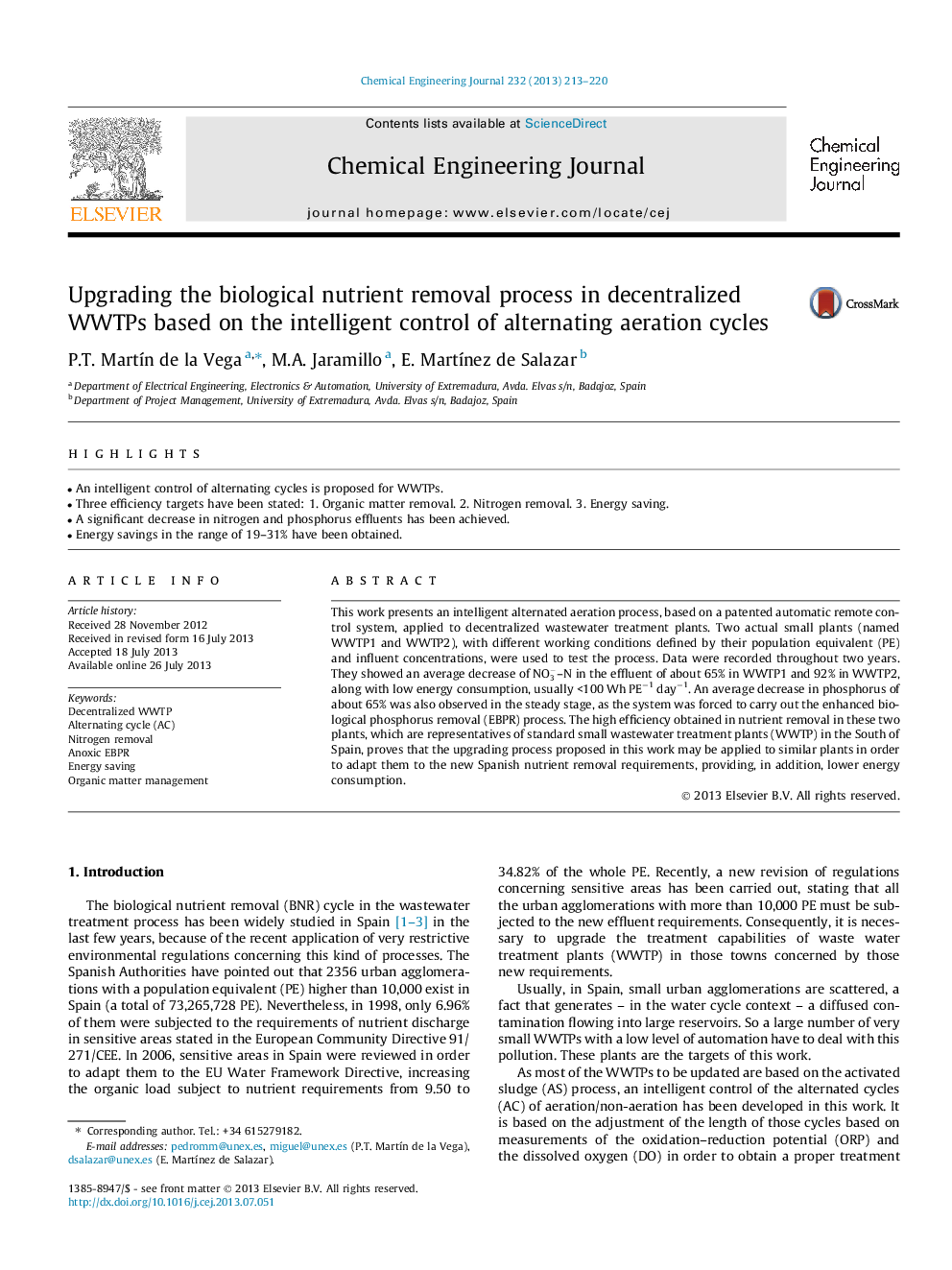| کد مقاله | کد نشریه | سال انتشار | مقاله انگلیسی | نسخه تمام متن |
|---|---|---|---|---|
| 148137 | 456406 | 2013 | 8 صفحه PDF | دانلود رایگان |

• An intelligent control of alternating cycles is proposed for WWTPs.
• Three efficiency targets have been stated: 1. Organic matter removal. 2. Nitrogen removal. 3. Energy saving.
• A significant decrease in nitrogen and phosphorus effluents has been achieved.
• Energy savings in the range of 19–31% have been obtained.
This work presents an intelligent alternated aeration process, based on a patented automatic remote control system, applied to decentralized wastewater treatment plants. Two actual small plants (named WWTP1 and WWTP2), with different working conditions defined by their population equivalent (PE) and influent concentrations, were used to test the process. Data were recorded throughout two years. They showed an average decrease of NO3-–N in the effluent of about 65% in WWTP1 and 92% in WWTP2, along with low energy consumption, usually <100 Wh PE−1 day−1. An average decrease in phosphorus of about 65% was also observed in the steady stage, as the system was forced to carry out the enhanced biological phosphorus removal (EBPR) process. The high efficiency obtained in nutrient removal in these two plants, which are representatives of standard small wastewater treatment plants (WWTP) in the South of Spain, proves that the upgrading process proposed in this work may be applied to similar plants in order to adapt them to the new Spanish nutrient removal requirements, providing, in addition, lower energy consumption.
Journal: Chemical Engineering Journal - Volume 232, October 2013, Pages 213–220